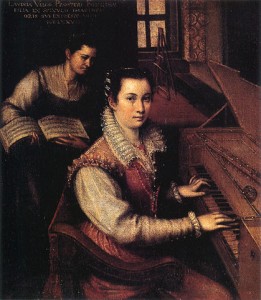
« Plastic artists should dwell like kings and gods : how else are they to build for kings and gods ? »(Goethe, Wilhelm Meister’s Journeyman Years II, 8). – What pertained to Goethe in a figurative sense is our question from varying perspectives in respect to the real visual artist in Europe up to 1800. Exceptional artists such as Goethe but also Mantegna, Dürer, Michelangelo, Rubens, Rembrandt or the Asam Brothers sometimes lived almost princely. But does this apply in general to the European artist of the pre-modern era ?
The conference will take a look at the artist’s home and initially examine his status from the perspective of social topography. What factors influenced this status ? To be considered are, for example, the neighbourhood, the proximity to possible clients or to prestigious places for sales such as centrally located squares, prominent streets or significant churches. The conference will investigate architecture and furnishings, the iconography and iconology of an iconographical program of artists’ homes from the perspective of art history and cultural history. Finally, the conference will also examine an early nascent conservation of the artist’s home or the dwelling as a place of remembrance in the period before 1800 and thus explore questions of the history of discourse or perception.
But we also expressly request papers deviating from the idea of the artist’s home à la Goethe, rather talks considering those visual artists who rented or who frequently moved and therefore acquired no property, also talks on artists who found accommodations with their clients.
What do we know about these artists’ flats or their homes ? Where and in what cities did artists’ quarters, artists’ streets or blocks of flats evolve, places where artists lived over a longer period ? Who lived with the artist ? How were the studios situated ? Were there sales rooms in the house, in the flat ? Were they also used for art instruction, to hold « academies » (Joachim von Sandrart) ? Is there a difference between the artists bound to guilds and those who worked at court ?
The conference will examine text and picture sources to determine the image of artistic self-portrayal at the time via the medium « artist’s house ». The latter is primarily to be viewed from the standpoint of the visual artist’s strategies to rise to a higher stratum in a hierarchical society where he was relegated to the status of craftsman. What was the role of the sometimes extensive art collections for which rooms were often exclusively built or reserved ?
Using case studies, overview representations and comparative examinations, the conference will approach the topic from the perspective of different disciplines, primarily, however, from the perspective of art history, cultural history, and social history.
Abstracts for as yet unpublished articles (a maximum of 2,000 characters, including spaces) with a brief CV and a possible selection of relevant publications may be submitted in German or English by 31 August 2014 to Danica Brenner M.A., email: brenner@uni-trier.de
Publication of the articles is planned for 2016 in the series artifex – Sources and Studies on the Social History of the Artist — « artifex – Quellen und Studien zur Künstlersozialgeschichte »(Michael Imhof Verlag, Petersberg).
The conference is held in cooperation with the Albrecht-Dürer-Haus, curated by Dr. Thomas Schauerte (the Nuremberg Museums) and the Social History of the Artist Research Centre (SHARC), principally the EU project « artifex », directed by Dr. Andreas Tacke, Professor (University of Trier, Chair, Art History).
Le colloque international « Visual artists must live like kings or gods ». Artists’ homes in the Middle Ages and the Early Modern Era se tiendra à Nuremberg du 11 au 14 juin 2015 ; les communications seront dispensées en allemand ou en anglais.
Organisateurs : Dr. Thomas Schauerte, Dr. Andreas Tacke, University Professor
Contact : Danica Brenner M.A., University of Trier, TAK – artifex, Im Treff 23, D-54286 Trier ; email : brenner@uni-trier.de

Leave a Reply
You must be logged in to post a comment.